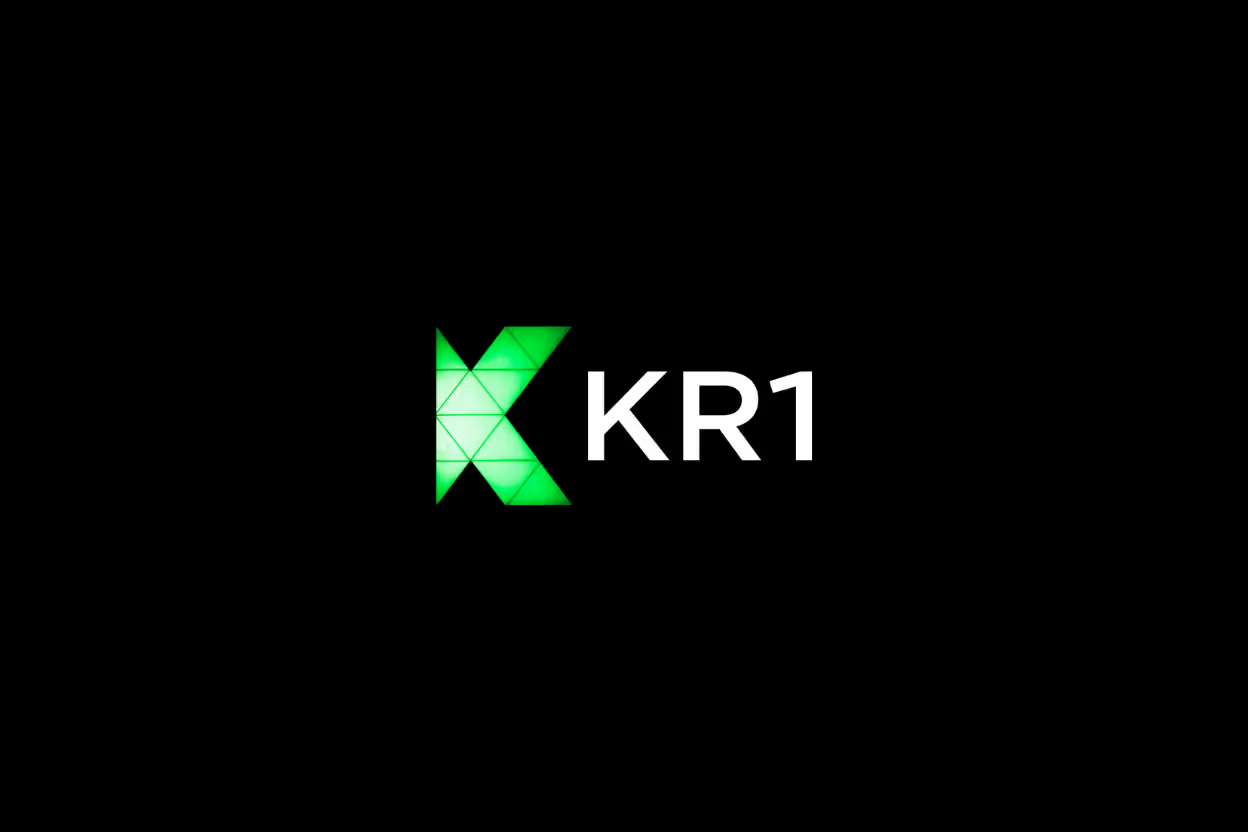Most growth playbooks borrowed from SaaS or consumer tech break down in Web3. Classic frameworks focus on predictable funnels and measurable KPIs, but crypto projects face a different reality. Networks change fast, value is fluid, and early token incentives can shift user motivation overnight.
A full-funnel approach in Web3 means guiding your audience from first learning about your project through to long-term contribution and advocacy. This involves not just driving awareness and sign-ups, but building aligned incentives, rooting activity in wallets and on-chain actions, and keeping your community joining, contributing, and advocating on your project's behalf.
You’ll see why a growth system built for Web3 goes beyond typical marketing. How do you design token incentives that reward—but don’t corrupt—participation? Which wallet events matter, and how do you track them without losing users in complex onboarding? What role does your core community actually play in retention and advocacy?
This post covers these questions with actionable strategies tailored for founders and teams building in crypto. Expect a focus on token design, wallet journeys, and community building that keeps engagement high and conviction deep—key ingredients for sustainable growth in the next cycle.
Understanding the Web3 Full-Funnel Growth Model
To create a thriving Web3 project, you need more than just strong technology or hype. True Web3 growth comes from guiding users along a path—from their very first encounter with your project, right through to becoming passionate advocates. The difference in Web3: every action, from connecting a wallet to voting on a proposal, leaves an onchain footprint. Founders who understand how to map and influence every part of this journey stand out, building real network effects. How does a user go from curious observer to committed community member? Where does community fit in, and how do wallet actions power each stage?
Mapping Web3 User Journeys: From Discovery to Advocacy
In Web3, the user journey follows five clear stages. Each step has unique metrics, challenges, and signals—often rooted directly in wallet or onchain activity. Let’s break down how this funnel works:
- Discovery: Users first hear about your project through social media, friends, or notable partnerships. NFT launches, token drops, and creative content help spark this awareness. Wallet activity may be low at this stage, but it’s the first moment that matters—what will draw them in?
- Exploration: The curious dive deeper. They visit your site, read your docs, maybe join a Discord. This stage often involves connecting a wallet and exploring dApps or protocols—you’ll see wallet pings, site interactions, and social follows start here.
- Adoption: Now users take real action. They mint an NFT, stake tokens, or swap assets. This is the heartbeat of onchain data—look for contract interactions, transaction frequencies, and holding patterns. Seamless onboarding counts; do clunky steps lose people?
- Community: Users become regular participants. They vote, attend AMAs, or provide feedback. DAO proposals, governance token usage, and NFT ownership signal deepening commitment. Onchain behavior includes more advanced participation—delegating, voting, or submitting improvement proposals.
- Advocacy: Fans publicly support or evangelize your project. They might run user groups, onboard friends, or build tools on your stack. Signals include referral links, onchain rewards for ambassadors, and increased offchain reputation.
Key question for founders: How can every wallet action— from the first token claim to governance voting—be recognized, measured, and rewarded?
Decentralized Community Building as a Funnel Lever
In Web3, the community is the connective tissue across the whole funnel. Rather than one stage, community acts as the backbone for everything from discovery through advocacy. Here’s why it’s so fundamental:
- DAOs and Decentralized Governance: Community-led DAOs turn users into owners. By voting on proposals or suggesting ideas, participants feel real influence. Token-based voting ensures the process is transparent and trustless. Have you considered how soon you’ll open your governance to real users?
- Social Channels and Presence: Platforms like Discord, Telegram, and Farcaster aren’t just chatrooms—they’re where onboarding, support, and education happen in real time. Effective projects host AMAs, workshops, and codeathons, letting early users become project champions.
- Token Governance and Ownership: Giving tokens unlocks utility but also a sense of belonging. Users who stake or hold tokens are often more loyal and active. Many new founders ask: how do I prevent whales from dominating, yet keep voting active?
- Community-Driven Trust and Transparency: Consistent updates, open voting, and feedback loops build social proof. In decentralized settings, people trust their peers more than anonymous teams. Rely on open forums, visible roadmaps, and public audits to keep everyone aligned.
The most successful Web3 projects show that community isn’t just a support system—it’s a growth engine. When your users feel empowered to shape your project, advocacy and network effects follow. Are you offering clear paths for users to graduate from lurker to leader in your system?
Top Strategies for Driving Awareness and Consideration
Building early trust and excitement in Web3 starts with clarity and connection. Educating your audience and forming the right partnerships set the tone for long-term adoption and community loyalty. If you want wallets to connect and users to stick around, focus first on what draws people in and keeps them asking for more. Not sure how to explain your tokenomics? Wondering how to build trust without a big brand name? Start here.
Educational Content and Web3 Explainers
In Web3, confusion holds users back more than skepticism. Most people still have basic questions: What does your project actually do? How does a wallet work? What do I risk when I stake or swap? Educational content cuts through this hesitation.
Use a mix of formats to meet your audience where they are:
- Blog posts and tutorials break down complex topics into easy, actionable steps. You can walk users through wallet setup, onchain voting, or earning rewards, all in plain language.
- Explainer videos add a human, visual element. Simple, two-minute guides showing how to mint an NFT or join your DAO can bridge the trust gap.
- AMA (Ask Me Anything) sessions and Twitter Spaces give founders a live forum to address questions, correct myths, and spotlight success stories.
- Interactive learning like quizzes, challenges, and open testnets let people gain hands-on experience—with low risk—which is essential when stepping into new tech.
Why does education drive trust? When you make crypto clear, new users are more willing to connect wallets, sign transactions, and come back for more. Great content establishes your project as approachable and reliable, qualities that matter in an industry where scams remain fresh in everyone’s mind. Can your team explain your core value in a tweet or a 30-second video? If not, start there.
Strategic Partnerships and Influencer Engagement
Social proof moves faster than any ad campaign in Web3. Partnerships with trusted projects, experts, and creators signal credibility and draw real attention.
A good partnership strategy starts with alignment. Ask yourself: Who already speaks to your ideal users? Which DAOs, protocols, or chains share your values or technical vision?
Build your partnership and influencer tactics around:
- Co-hosted events and hackathons which unite overlapping audiences. Shared Discord AMAs, joint workshops, or even hackathons on your protocol introduce users directly to your ecosystem.
- Influencer campaigns that target respected Web3 educators, researchers, and early adopters. Influencers with real, engaged followings bring credibility and encourage their communities to take a closer look.
- Token or NFT-based collaborations where you can launch limited drops or shared rewards, tying user journeys together and boosting joint visibility.
- Strategic cross-promotions on social platforms, newsletters, and podcasts. When a bigger or more established ecosystem signals support for your project, skeptical users take notice.
Credible connections do more than build hype. They add outside trust to your internal messaging and open new channels for organic reach. Genuine collaboration—rather than simple shoutouts—yields communities that overlap, not just temporary attention spikes.
Are you partnering with the right leaders, builders, and creators? The right answer lights a spark, creates curiosity, and brings your project into trusted peer groups, right where your target users already spend their time.
Converting and Activating Users with Onchain Actions
Moving users from mere curiosity to active, engaged participants in your Web3 project depends largely on how well you handle their first onchain experiences. Every interaction logged on the blockchain tells a story about user interest, trust, and commitment. By focusing on smooth onboarding and tracking meaningful activation metrics, founders can turn new wallets into loyal contributors.
Smoothing Onboarding: Tutorials, Incentives, and UI Tips
Getting users to install wallets, manage seed phrases, and perform first transactions can feel like climbing a steep hill. The friction is real, especially for users new to blockchain.
To ease this journey, start by breaking down complex steps into clear, bite-sized guidance:
- Use step-by-step tutorials embedded right in your app or website that visually guide users through wallet installation and setup. For example, projects like Uniswap or OpenSea offer concise popping info boxes explaining wallet connection and transaction signing.
- Offer incentives for completion such as small token airdrops or exclusive NFT access once they finish onboarding actions. These rewards motivate users to pass through initial barriers.
- Simplify your user interface by mirroring familiar Web2 patterns where possible: clear buttons labeled “Connect Wallet,” “Claim Tokens,” and minimal jargon. Avoid throwing all options at users at once; introduce features gradually.
- Provide seed phrase education and backup reminders early and often. Use friendly language to emphasize security without overwhelming users. Quick FAQ links or short explainer videos work well here.
- Consider using Wallet-as-a-Service solutions that allow users to create wallets with email or social logins, removing the friction of immediate key management. This approach caters well to mainstream audiences entering Web3.
Onboarding isn’t just about functionality; it’s about building initial trust and confidence. Real projects have shown these tactics reduce drop-off rates by 20-30% in the first interaction, paving the way for deeper engagement.
Activation Metrics: Tracking Onchain Engagement
Once users are onboard, founders need to know which actions indicate genuine activation and value. Not every wallet connection is equal. Focus on behavior that signals commitment to your ecosystem.
Key onchain metrics to track include:
- Conversion to Active Wallet: The number or percentage of users who move beyond connecting wallets to making the first transaction (minting, staking, swapping). This step shows initial trust and willingness to participate.
- Staking Activity: Users locking tokens in your protocol reveal belief in the project’s future. Staking amounts and duration signal engagement depth.
- Governance Participation: Votes cast, proposals created, or delegations made highlight active contributions to decision-making. Governance is often the make-or-break moment for community ownership.
- Frequency of Transactions: How often users interact with your smart contracts over time indicates sustained interest. One-off transactions are less valuable than consistent activity.
- Referral Conversions: Onchain-tracked referral links that reward ambassadors or early adopters can show how effectively your network grows organically through community trust.
Collecting and analyzing these metrics lets you answer critical questions: Are users moving beyond passive observers? Where do drop-offs occur? Which incentives nudge users to take the next step?
Using blockchain-native analytics platforms or custom monitoring via APIs can transform raw onchain data into actionable insights. Founders who measure engagement beyond surface-level wallet connections can optimize product flows, refresh incentives, and spot early signs of loyal advocates versus temporary visitors.
By combining purposeful onboarding design with deliberate tracking of activation metrics, your project builds a pipeline where new users steadily convert into engaged, onchain participants driving meaningful network effects.
Building Sustainable Engagement and Community-Led Growth
Sustaining engagement in Web3 goes beyond initial hype or short-term token incentives. Long-term growth depends on creating a community that feels ownership and stays active because their contributions hold real value. This means designing rewards that matter, fostering collaboration, and empowering users with governance tools that align everyone’s interests.
Building a community-led ecosystem requires balancing incentive mechanisms with authentic participation. Let’s explore practical ways to do this, from structuring rewards and token utilities to activating superfans through content and DAO governance.
Designing Rewards, Bounties, and Token Utility
Incentives give users a reason to act, but they must be carefully designed to encourage meaningful engagement without turning activity into a simple chase for tokens. Gamification offers a compelling way to keep members interested over time, turning involvement into a game where rewards reflect real impact.
- Gamified Growth: Introduce tasks like quests, challenges, or leaderboard competitions tied to meaningful onchain actions (staking, voting, contributing code). Games make reward structures transparent and fun, motivating users to keep coming back.
- Airdrops and Bounties: Use token drops strategically to reward early adopters or key contributors. Bounties encourage problem-solving and community collaboration, targeting specific goals like bug fixes, content creation, or network onboarding.
- Token Utility Design: Moving beyond speculative value, tokens should unlock tangible benefits: access to premium features, governance rights, staking rewards, or exclusive community roles. How will your token keep users excited once the initial airdrop ends?
- Long-Term Commitment: Encourage holding and active use rather than quick sell-offs through vesting schedules, staking rewards, or exclusive voting power for token holders. This creates sustained alignment between user incentives and project health.
Tokens aren't just currency; they are tools that shape behavior. Thoughtful reward schemes make engagement feel rewarding and purposeful, nurturing loyalty instead of fleeting interaction.
Community Content and DAO-Driven Advocacy
A thriving Web3 community produces and shares content naturally. Content co-creation empowers members, turning supporters into advocates who amplify your message and multiply network effects.
- Co-Creating Content: Invite community members to contribute blog posts, tutorials, memes, or podcasts. Diverse voices add richness and relatability, while creators feel recognized and valued.
- Activating Superfans: Identify and support highly engaged users by giving them roles as moderators, event organizers, or content leaders. These superfans become human hubs, encouraging others to participate and stay engaged.
- DAO Governance as Engagement: DAOs put decision-making power in the hands of users, establishing a sense of shared ownership. Regular proposals, voting rounds, and transparent treasury management keep members involved in shaping direction.
- Spreading Network Effects: When your community feels ownership and agency, members naturally share invitations, run meetups, and promote the project on social channels and in other Web3 spaces. Advocacy grows organically and exponentially.
Allowing your community to help build your project turns users into owners and storytellers. It creates momentum that no traditional marketing can match. DAO-based governance and content collaboration are essential levers for sustained, authentic growth.
Building durable engagement and community-led growth is about more than launching tokens or running campaigns. It’s about fostering a culture where members have clear reasons and channels to participate, create, and lead. Designing rewards with lasting utility and supporting vibrant community-driven advocacy helps move users from passive holders to active builders. These strategies will serve as the foundation of your full-funnel Web3 growth system.
Measuring and Optimizing Every Stage of the Web3 Funnel
Understanding how your users move through your Web3 project’s funnel is essential, but measuring and optimizing each step is what turns insight into growth. Web3 funnels differ from traditional marketing because every user action can be tied to wallet activity or on-chain behavior. This means you have both a rich set of metrics and unique challenges: Which numbers truly show value? How do you capture those numbers without compromising user experience? And most importantly, how do you act quickly on those insights to keep the funnel flowing?
Key Funnel Metrics and Analytics Tools for Web3
Tracking the right key performance indicators (KPIs) can unlock a clear view of your funnel’s health and help you spot leaks early. The core KPIs every Web3 founder should watch include:
- Customer Acquisition Cost (CAC) per wallet: How much are you spending to attract each active wallet? This goes beyond clicks or impressions, focusing on wallets that actually engage.
- Lifetime Value (LTV) of a user: Sum up all on-chain interactions, token holdings, and governance participation to estimate what value your users bring over time.
- Retention rates: Measure wallet return frequency and ongoing transactions rather than just sign-ups. Are users coming back and actively participating?
- Wallet activity metrics: Include transaction count, staking volume, NFT minting, governance votes, and referral conversions to understand engagement depth.
To monitor these, Web3-native tools outperform traditional analytics because they integrate wallet and blockchain data directly:
- Wallet analytics platforms like Nansen, Dune Analytics, and Addressable allow you to map wallet behaviors, identify segments, and link campaigns with real on-chain outcomes.
- Community dashboards aggregate participation metrics, governance voting turnout, and token distributions, providing transparency on community health.
- Automation platforms such as Tally, Gnosis Safe automation, or custom smart contracts enable real-time reward distribution based on wallet activity and trigger workflows based on event data.
Using these tools together lets you track funnel stages in ways impossible in Web2. You can connect off-chain marketing efforts with on-chain engagement, aligning spend and strategy for maximum impact.
Iterating Fast: Using Data to Refine Funnel Performance
Data without action is just noise. Web3 founders need to move quickly, iterating on funnel touchpoints to reduce friction, improve onboarding, or test new incentives. Here’s how to stay ahead:
- Run small, targeted tests: Experiment with onboarding UX tweaks, token rewards, or communication frequency with carefully segmented wallet groups. Measure how changes affect activation and retention in the short term.
- Monitor funnel drop-off points closely: For example, if connecting wallets is high but first transaction rates drop, focus on onboarding support or reduce transaction gas costs.
- Use wallet-level cohorts: Group users by behavior patterns (stakers vs holders, voters vs lurkers) and tailor interventions that nudge specific groups forward in the funnel.
- Avoid common pitfalls: Don’t rely purely on vanity metrics like wallet connections without follow-up action. Also, beware of over-incentivizing low-value actions that encourage churn or bot activity.
- Leverage automation for rapid iteration: Set up feedback loops using smart contracts or automation tools so your system can adjust rewards or permissions dynamically based on real-time data.
The goal is to build a feedback loop where wallet activity informs product decisions in near real time, speeding up your learning cycle. Ask yourself often: Which stage is leaking users? Are incentives aligned with long-term project health? What data patterns suggest new opportunities or risks?
By combining the right metrics, tools, and a mindset of rapid, data-driven iteration, you can optimize each step of your Web3 funnel to convert curiosity into lasting community participation and advocacy. This disciplined approach helps founders move beyond hype and build measurable, sustainable growth.
Conclusion
Building a full-funnel Web3 growth system means going beyond surface metrics to understand every stage of user engagement—from discovery and onboarding to active participation and advocacy. The real advantage lies in tying growth efforts to wallet activity and on-chain behaviors, creating incentives that reward genuine involvement without encouraging short-term speculation.
Founders should focus on clear user journeys, consistent measurement of activation and retention, and fostering communities where users feel ownership and influence through token governance and content collaboration. This approach turns casual observers into passionate contributors, forming the foundation for sustainable growth.
Start mapping your funnel today using wallet analytics and community feedback. Use those insights to refine your incentives, reduce friction, and empower your users. The tools and strategies shared throughout this guide are proven ways to build momentum that lasts, not just hype that fades.
What wallet action will you optimize next? How will your project keep users engaged beyond the first transaction? Your full-funnel system is the roadmap to turning early interest into lasting impact.









